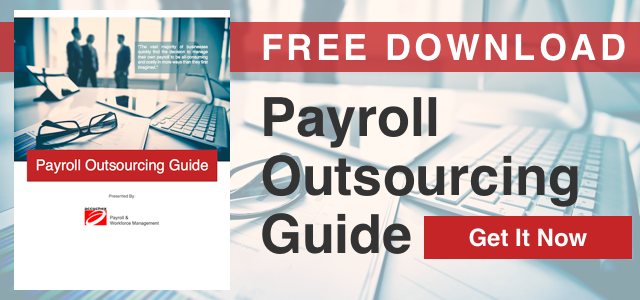 Employee classification has become increasingly tricky. Incorrectly classifying employees as independent contractors is a real risk for many employers. An article from Forbes.com last year stated, "This fundamental worker status issue has become one of the most consequential legal determinations around. If you’re in business and guess wrong, the liability for past years can be crushing." In 2013 the IRS Inspector General issued a report saying that employers are still getting it wrong.
Employee classification has become increasingly tricky. Incorrectly classifying employees as independent contractors is a real risk for many employers. An article from Forbes.com last year stated, "This fundamental worker status issue has become one of the most consequential legal determinations around. If you’re in business and guess wrong, the liability for past years can be crushing." In 2013 the IRS Inspector General issued a report saying that employers are still getting it wrong.
Classifying employees correctly is critical
Mis-classifying employees can result in significant liability. According to a article from HRCalifornia, "If your company controls the details and the worker does not have meaningful discretion in how he/she completes the work, it has generally been the rule that the worker will be found to be an employee and not an independent contractor."
In addition, state governments and the IRS are concerned about the loss of tax revenue when this occurs. “This problem adversely affects employees because the employer’s share of taxes is not paid and the employee’s share is not withheld,” said J. Russell George, Treasury Inspector General for Tax Administration. “If left unchecked, the problem will continue to deprive the Federal Government, and the American people, of millions of dollars in lost revenue every year,” he added.
What are the rules for employee classification?
In the past, the IRS has provided guidelines to direct its agents for determining worker status. The guidelines include a list of 20 factors determined by the IRS which have been used in court decisions regarding worker status.
Commonly referred to as the "20-factor test", and still used as guidelines, some of the factors are less relevant as in the past. Currently, IRS agents are directed to focus on the overall situation rather than specific aspects of the 20 factor test.
According to the IRS rules, employee classification and a worker's status hinges on whether the employer has the right to direct and control the service provider on what is to be done and how it is to be done. Typically, an employer does control how an employee performs work. On the other hand, independent contractors will usually determine how their work is done.
Three issues to consider
Court cases have established three broad categories of factors for determining employee classification:
1. Behavioral control
Do you, as the employer, have a right to direct and control how the worker does the task that you hired them for? Behavioral control factors include the extent of:
- Instructions you or your staff gives the worker. Normally, an employee is required to follow instructions regarding how, where, and when, he or she works. (Note that even if there are no explicit instructions provided, it can be deemed that sufficient behavioral control may exist you have the right to control how the worker's results are achieved.)
- Any training your company provides the worker. While independent contractors normally implement their own methods, employees are often trained to perform their job by the employer.
2. Financial control
Does your business have a right to control the business aspects of the worker’s job such as:
- The extent of un-reimbursed business expenses incurred. Independent contractors are likely to have un-reimbursed expenses whereas employees do not. Especially important are the fixed, ongoing costs that can be incurred regardless of whether or not the work is being performed.
- The extent to which a profit can be realized or a loss incurred by the worker. An independent contractor, unlike most employees, can make a profit or loss.
- The extent to which the worker has an investment in facilities, tools, or equipment. Independent contractors normally have a significant investment in what they need to perform services for someone else.
3. Relationship between parties
Relevant facts regarding the type of relationship between you and the worker include:
- A written contract defining the relationship intended between your company and the worker.
- Whether your business provides the worker with any benefits, such as health insurance, vacation pay or sick pay, or even pension plans. These are typically benefits reserved for employees.
CONCLUSION:
With the recent pressure being put on employers by both the IRS and various state agencies, it is critcal that businesses be fully informed regarding the correct status and proper employee classification of all their workers.
According to the IRS website:
"Businesses must weigh all these factors when determining whether a worker is an employee or independent contractor. Some factors may indicate that the worker is an employee, while other factors indicate that the worker is an independent contractor.
There is no “magic” or set number of factors that “makes” the worker an employee or an independent contractor, and no one factor stands alone in making this determination. Also, factors which are relevant in one situation may not be relevant in another.
The keys are to look at the entire relationship, consider the degree or extent of the right to direct and control, and finally, to document each of the factors used in coming up with the determination."
If you are looking for reliable help with determining employee classification, we can help. Get your Free Download: Payroll Outsourcing Guide to help you make an informed decision or call Accuchex Payroll Management Services at 877-422-2824.


